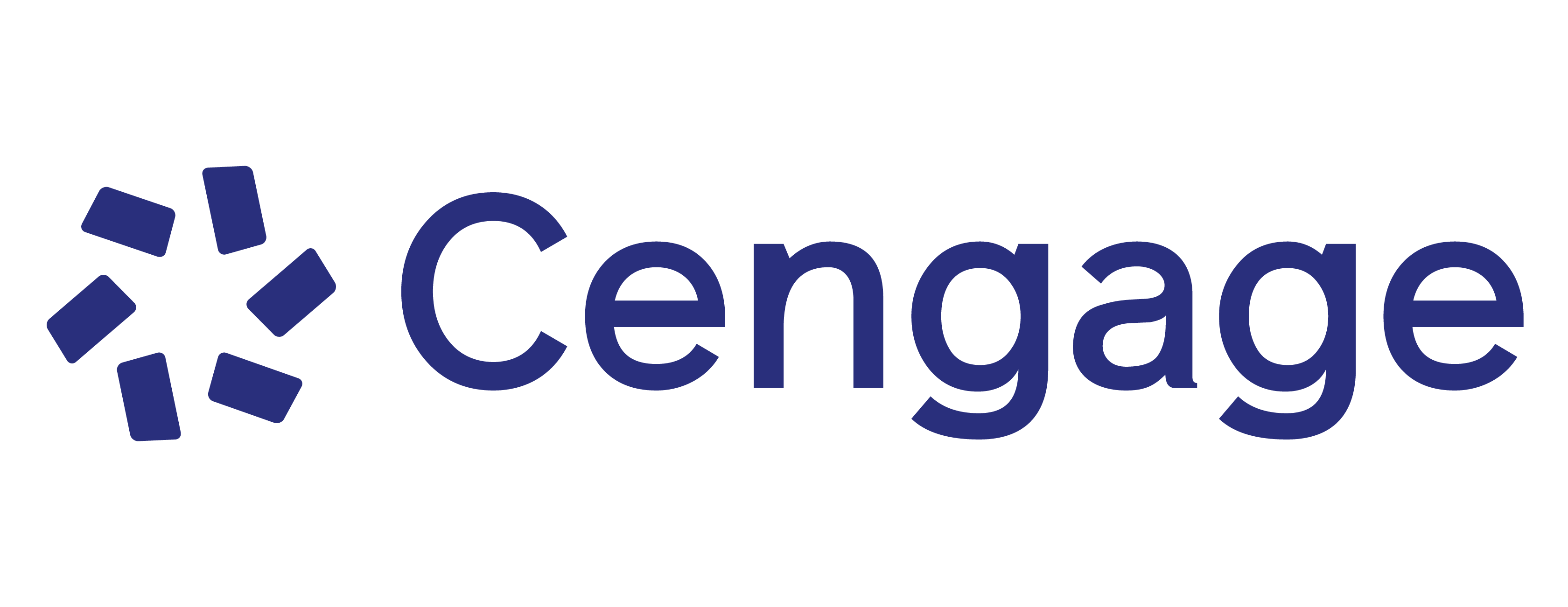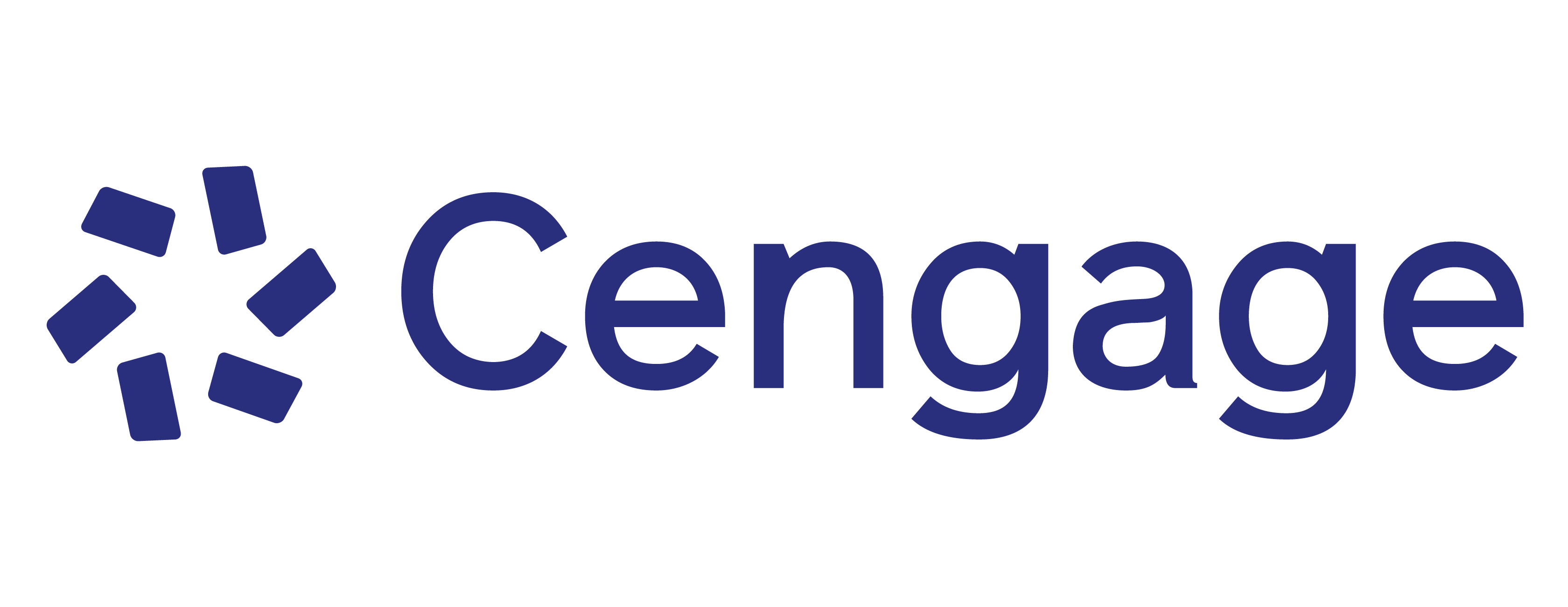Put the world today into context by learning about the past with this brief, best-selling Western Civilization text, which has helped thousands of students succeed in the course. Jackson Spielvogel’s engaging style of writing weaves the political, economic, social, religious, intellectual, cultural, and military aspects of history into a gripping story that is as memorable as it is instructive. Learning and study tools include maps, illustrated chapter summaries, timelines, study questions, and key terms. Also available is MindTap for WESTERN CIVILIZATION: A BRIEF HISTORY, 9th EDITION, an online digital learning experience that combines readings and interactive activities into a learning path that guides you through the course. The textbook is available in the following split options: WESTERN CIVILIZATION: A BRIEF HISTORY, 9th EDITION COMPLETE, VOLUME I: TO 1715, and VOLUME II: SINCE 1500.
1. The Ancient Near East: The First Civilizations.
2. The Ancient Near East: Peoples and Empires.
3. The Civilization of the Greeks.
4. The Hellenistic World.
5. The Roman Republic.
6. The Roman Empire.
7. Late Antiquity and the Emergence of the Medieval World.
8. European Civilization in the Early Middle Ages, 750–1000.
9. The Recovery and Growth of European Society in the High Middle Ages.
10. The Rise of Kingdoms and the Growth of Church Power.
11. The Later Middle Ages: Crisis and Disintegration in the Fourteenth Century.
12. Recovery and Rebirth: The Age of the Renaissance.
13. Reformation and Religious Warfare in the Sixteenth Century.
14. Europe and the World: New Encounters, 1500–1800.
15. State Building and the Search for Order in the Seventeenth Century.
16. Toward a New Heaven and a New Earth: The Scientific Revolution and the Emergence of Modern Science.
17. The Eighteenth Century: An Age of Enlightenment.
18. The Eighteenth Century: European States, International Wars, and Social Change.
19. A Revolution in Politics: The Era of the French Revolution and Napoleon.
20. The Industrial Revolution and Its Impact on European Society.
21. Reaction, Revolution, and Romanticism, 1815–1850.
22. An Age of Nationalism and Realism, 1850–1871.
23. Mass Society in an “Age of Progress,” 1871–1894.
24. An Age of Modernity, Anxiety, and Imperialism, 1894–1914.
25. The Beginning of the Twentieth-Century Crisis: War and Revolution.
26. The Futile Search for Stability: Europe Between the Wars, 1919–1939.
27. The Deepening of the European Crisis: World War II.
28. Cold War and a New Western World, 1945–1965.
29. Protest and Stagnation: The Western World, 1965–1985.
30. After the Fall: The Western World in a Global Age (Since 1985).
Glossary.
Index.
-
Jackson J. Spielvogel
Jackson J. Spielvogel is Associate Professor Emeritus of History at The Pennsylvania State University. He received his Ph.D. from The Ohio State University, where he specialized in Reformation History under Harold J. Grimm. His articles and reviews have appeared in journals such as MOREANA, JOURNAL OF GENERAL EDUCATION, CATHOLIC HISTORICAL REVIEW, ARCHIV FÜR REFORMATIONSGESCHICHTE and AMERICAN HISTORICAL REVIEW. He also has contributed chapters or articles to THE SOCIAL HISTORY OF REFORMATION, THE HOLY ROMAN EMPIRE: A DICTIONARY HANDBOOK, the SIMON WIESENTHAL CENTER ANNUAL OF HOLOCAUST STUDIES and UTOPIAN STUDIES. His work has been supported by fellowships from the Fulbright Foundation and the Foundation for Reformation Research. At Penn State, he helped inaugurate the Western Civilization course, as well as a popular course on Nazi Germany. His book HITLER AND NAZI GERMANY was first published in 1987 (7th Edition, 2014). In addition, he is the author of WESTERN CIVILIZATION, first published in 1991 (10th Edition, 2018), and co-author (with William Duiker) of WORLD HISTORY, first published in 1994 (9th Edition, 2019). Professor Spielvogel has won five major university-wide teaching awards. During the 1988-1989 year, he held the Penn State Teaching Fellowship, the university's most prestigious teaching award. He won the Dean Arthur Ray Warnock Award for Outstanding Faculty member in 1996 and received the Schreyer Honors College Excellence in Teaching Award in 2000.
-
The 9th edition includes new material and scholarship on such topics as the role of the phalanx and colonies in the rise of democracy in Greece, sports and violence in ancient Greece (Ch. 3); “Women in Byzantium” and “Women in the Slavic world,” (new sections), women in the world of Islam (Ch. 8); “The Birth of Modern Diplomacy” (new section), the impact of printing, and English civil wars in the 15th century (Ch. 12).
-
New content presents information about the Latin American economy, food and population growth, mass consumption (Ch. 23); the Algerian revolution, the denazification of postwar Germany, the European Common Market (Ch. 28); the global economy, Russia and Ukraine, “The West and Islam” (new section), the war in Afghanistan, the Catholic Church, and technology (Ch. 30).
-
A new focus question has been added at the beginning of each chapter. Entitled “Connections to Today,” this question is intended to help students appreciate the relevance of history by asking them to draw connections between the past and the present.
-
New historiographical sections examine how and why historians differ in their interpretation of specific topics. Examples include “Was There a United Kingdom of Israel?”; “Was There a Renaissance for Women?”; “The Retreat from Democracy: Did Europe Have Totalitarian States?”; and “Why Did the Soviet Union Collapse?”
-
MindTap® for WESTERN CIVILIZATION: A BRIEF HISTORY, 9th EDITION, is available with the text. This personalized, online digital learning platform provides students with an immersive, interactive learning experience that helps to build critical thinking skills. Through a carefully designed chapter-based learning path, MindTap allows students to easily identify the chapter’s learning objectives, complete readings-based activities organized into short, manageable blocks, and test their content knowledge with Aplia Critical Thinking Activities developed for key concepts in each chapter.
-
The 9th edition includes new material on such topics as the role of colonies in the rise of democracy in Greece, sports and violence in ancient Greece (Ch. 3); women in Byzantium, the Slavic world, and in the world of Islam (Ch. 8); the impact of printing, (Ch. 12); food and population growth, mass consumption (Ch. 23); the Algerian revolution, the denazification of postwar Germany, the European Common Market (Ch. 28); the global economy, Russia and Ukraine, “The West and Islam” (new section), the war in Afghanistan, the Catholic Church, and technology (Ch. 30).
-
A new focus question has been added at the beginning of each chapter. Entitled “Connections to Today,” this question is intended to help you appreciate the relevance of history by asking you to draw connections between the past and the present.
-
New historiographical sections examine how and why historians differ in their interpretation of specific topics. Examples include “Was There a United Kingdom of Israel?”; “Was There a Renaissance for Women?”; and “Why Did the Soviet Union Collapse?”
-
Spielvogel’s clear, lively, and informative writing style is central to the text’s success with students. Numerous testimonials from professors state that the readability of the text is a primary reason they use it -- an adoption list that ranges from Ivy League universities to two-year technical colleges supports this assertion. Seamless integration of social, cultural, economic, and political history ensures that readers have a balanced understanding of the causes and consequences of events.
-
Appearing in almost every chapter, “Opposing Viewpoints” features (with questions) present a comparison of two or three primary sources to facilitate student analysis of historical documents. Topics include “The Great Flood: Two Versions” (Ch. 1); “Lords, Vassals, and Samurai in Europe and Japan” (new, Ch. 8); “Causes of the Black Death: Contemporary Views” (new, Ch. 11); “Enlightened Absolutism: Enlightened or Absolute?” (Ch. 18); “Attitudes of the Industrial Middle Class in Britain and Japan” (new, Ch. 20); and “Islam and the West: Secularism in France” (Ch. 30).
-
“Images of Everyday Life” features combine two or more illustrations with an extended caption to provide insight into different aspects of social life. Topics include “The Egyptian Diet”, “Children in the Roman World”, “Entertainment in the Middle Ages”, “Spices and World Trade”, “Living Conditions of London’s Poor”, “Youth Culture in the 1960s”, and “The New Global Economy: Fast Fashion.”
-
“Film & History” features provide a brief analysis of the plot as well as the historical significance, value, and accuracy of eleven films, including The Gladiator, The Young Victoria, and a new addition, The Iron Lady.
-
A rich collection of primary documents gives students access to the kind of material historians rely on: letters, memoirs, song lyrics, official documents, diary entries, menus, poetry, plays, and more. New to the 9th edition: “Relations between Greeks and Non-Greeks”, “A Byzantine Emperor Gives Military Advice”, “A Liberated Woman in the Fourteenth Century”, “Queen Elizabeth I: ‘I Have the Heart of a King’”, “Margaret Cavendish: The Education of Women”, “The Great Irish Potato Famine”, “Heinrich Himmler: We Had the Moral Right”, and Betty Friedan, “The Problem That Has No Name.”
-
Over 325 four-color maps and artwork reproductions appear throughout the text. A guide to Studying from Primary Source Materials at the front of the book includes tips on reading maps to help students understand the important connection between geography and the development of historical events. There are also guides to reading documents and studying photographs and illustrations. Chronologies in every chapter list dates important to the understanding of a period and place historical people and events in a comparative setting.
-
Focus Questions appear in the chapter-opening outline and are repeated at the beginning of the corresponding major section in the chapter to reinforce the main ideas.
-
“Opposing Viewpoints” features present a comparison of two or three primary sources, with accompanying questions, to facilitate your analysis of historical documents. Topics include “Lords, Vassals, and Samurai in Europe and Japan”, “Causes of the Black Death: Contemporary Views”, “Attitudes of the Industrial Middle Class in Britain and Japan”, and “Czechoslovakia, 1968: Two Faces of Communism.”
-
“Images of Everyday Life” features combine two or more illustrations with an extended caption to provide insight into different aspects of social life. Topics include “The Egyptian Diet”, “Children in the Roman World”, “Entertainment in the Middle Ages”, “Spices and World Trade”, “Youth Culture in the 1960s”, and “The New Global Economy: Fast Fashion.”
-
“Film & History” features provide a brief analysis of the plot as well as the historical significance, value, and accuracy of eleven films, including The Gladiator, The Young Victoria, and a new addition, The Iron Lady.
-
Primary documents give you access to the kind of material historians rely on: letters, memoirs, song lyrics, official documents, diary entries, menus, poetry, plays, and more. New documents include “A Liberated Woman in the Fourteenth Century”, “Queen Elizabeth I: ‘I Have the Heart of a King’”, “Margaret Cavendish: The Education of Women”, “The Great Irish Potato Famine”, “Heinrich Himmler: We Had the Moral Right”, and Betty Friedan, “The Problem That Has No Name.”
-
Over 325 four-color maps and artwork reproductions appear throughout the text. Guides at the front of the book include tips on reading maps to help you understand the important connection between geography and the development of historical events, as well as tips on reading documents and studying photographs and illustrations. Chronologies in every chapter list dates important to the understanding of a period, and place historical people and events in a comparative setting.
Cengage Testing, powered by Cognero® for Spielvogel’s Western Civilization: A Brief History, Instant Access
9781305669642
Cengage Testing, powered by Cognero® for Spielvogel's Western Civilization: A Brief History
9781305669635
Instructor's Web Site for Spielvogel's Western Civilization: A Brief History, 9th
9781305857353
VitalSource eBook: Western Civilization 12 Months
9788000008646


